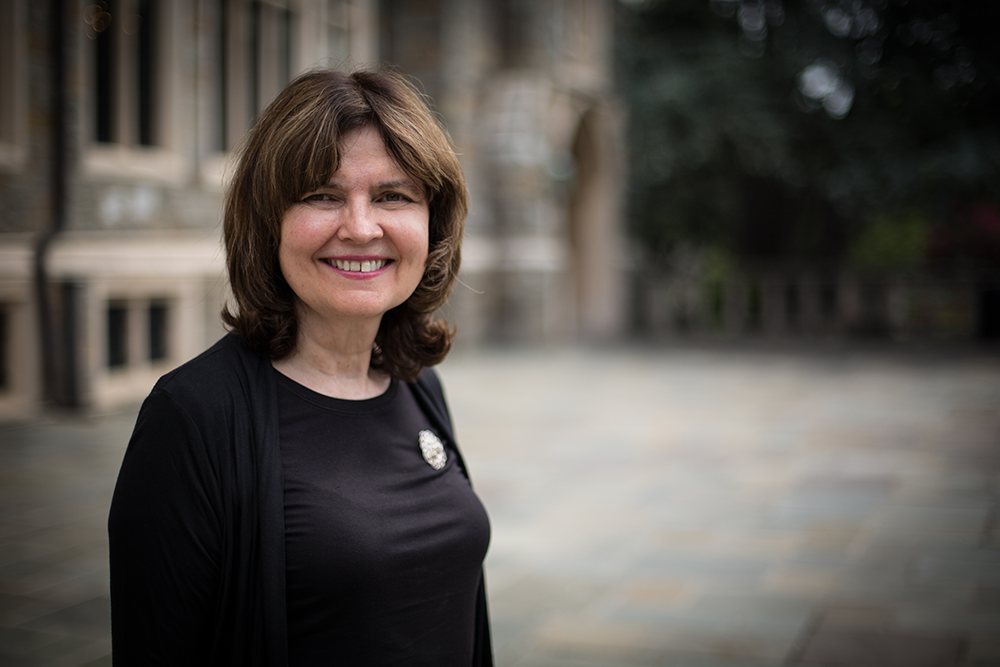Children learn math concepts better when interacting with intelligent virtual characters, according to a new study co-authored by Georgetown University psychology professor Sandra Calvert.
The study titled “Young Children’s Mathematical Learning From Intelligent Characters” was published in the journal Child Development on Nov. 20. In the study, researchers sometimes included an intelligent character in a virtual math game for children to explore how parasocial relationships, the bonds a child forms with a character, impact learning. The researchers also gave feedback to some participants through the character to examine the role of social interactions in learning, according to a Georgetown College news release.

Participants in the study who formed strong parasocial relationships answered math questions more quickly and accurately than participants who did not interact with a character according to Calvert.
“The key findings were that children who had stronger emotionally tinged parasocial relationships with the character- Dora the Explorer- learned a math rule better, and that those who interacted with the character using math talk learned the rule the best,” Calvert wrote in an email to The Hoya. “Once children know that rule, cognitive resources are freed up to learn higher order math skills.”
The study’s findings suggest that children learn fundamental math better when interacting with a virtual character, according to Evan Barba, an associate professor of communication, culture, and technology at Georgetown who co-authored the study. The results additionally indicate that interactive relationships are an important part of learning.
“I think it would be impossible to say that these findings hold for all children learning math,” Barba wrote in an email to The Hoya. “What I can say for sure is that these children seemed to learn better from characters. I’d like others to realize that the relationship between teacher and student, even when parasocial, has an impact on learning.”
The three-part study received funding from the National Science Foundation and was co-authored by Calvert and Barba, alongside Marisa Putnam (GRD ’16, ’19), Naomi Aguiar, Rebecca Ryan, Charlotte Wright (COL ’16) and Yi Hui Angella Liu, according to a Georgetown College statement.
The interactive character could not be fully automated because artificial intelligence still struggles to recognize young children’s speech patterns, according to the study. To control interactivity of the game, research assistant Christina Duval (COL ’20) manipulated the character from behind a curtain where the children could not see.
The study’s results demonstrate technology’s potential to improve childrens’ education as well as to offer support for those who struggle with learning, according to Duval.
“The takeaway I want people to have is mainly how important technology can be for helping some kids. All we usually hear about is the negative impacts of technology on children,” Duval wrote in an email to The Hoya. “Applications of it like Dr. Calvert’s interactive, intelligent media character game can be really beneficial for children who need extra support and whose parents don’t have the resources to provide it in person.”
American children rank behind their international peers in STEM fields, according to the study. In 2012, the United States earned a below average score in math literacy in the Program for International Student Assessment taken by students in 34 countries, according to the National Science Foundation.
Using interactive, virtual characters like Dora in Calvert’s study is becoming a more viable method to teach children basic math skills and improve the United States’ global ranking in math education, according to Calvert.
“Twenty-first century learning will increasingly involve artificial life,” Calvert wrote. “When children’s relationships and interactions with these agents are similar to those with real people, there are measurable benefits in learning subjects like math that can help children get off to the right start when they enter school.”
Moving forward, Calvert hopes to apply the results from this study and her previous work to examine how children learn other subjects like science, she wrote.
“Studying children’s relationships with socially meaningful intelligent characters who can reply to children in a socially contingent manner to math problems was a logical next step in my research program,” Calvert wrote. “I plan to build on this research program by exploring children’s learning of science with my research team.”




















